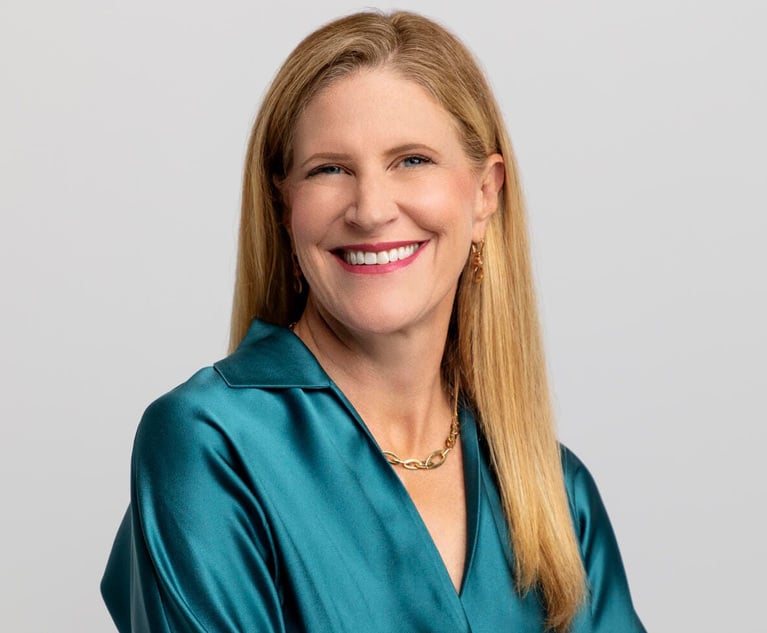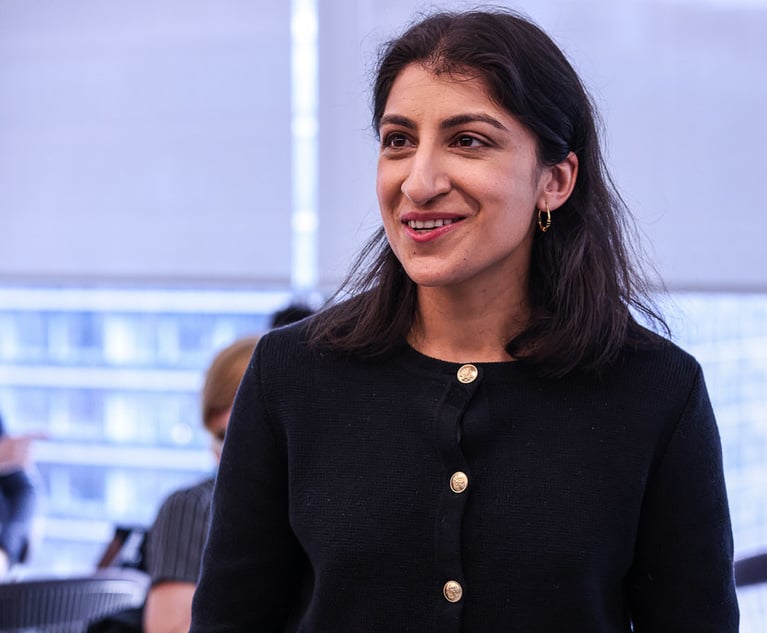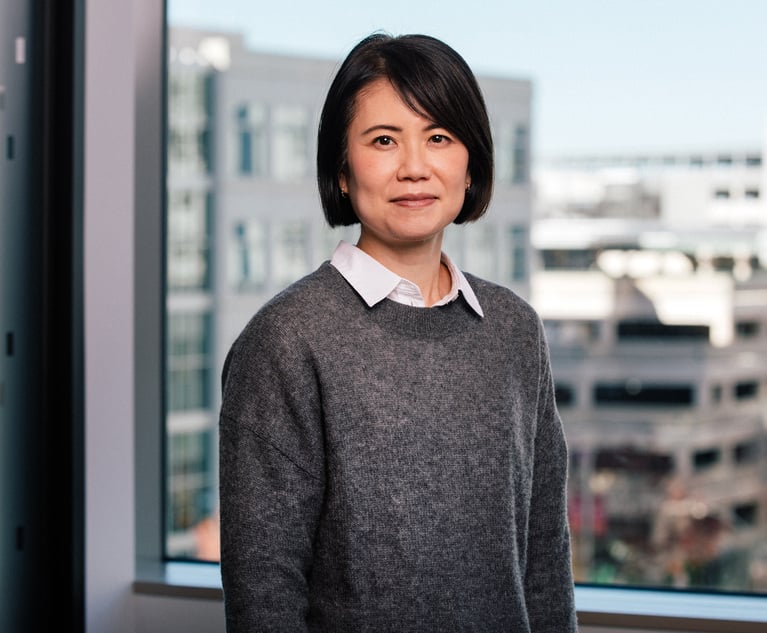Public advocacy group proposes 5 alternatives to SOPA
Copyright infringement is a hot-button issue, especially in todays age of digital piracy and illegal file sharing. Efforts to combat online theft in the form of the Stop Online Piracy Act (SOPA) failed earlier this year. But now, a public advocacy group is offering its own plan to balance Internet...
March 01, 2012 at 09:14 AM
4 minute read
The original version of this story was published on Law.com
Copyright infringement is a hot-button issue, especially in today's age of digital piracy and illegal file sharing. Efforts to combat online theft in the form of the Stop Online Piracy Act (SOPA) failed earlier this year. But now, a public advocacy group is offering its own plan to balance Internet openness and copyright protection.
Public Knowledge recently launched the Internet Blueprint project, aimed at developing bills that will “strengthen and improve the way that the internet and law relate to one another.” The Washington Post's Brad Plumer analyzed the project's main aims, and broke them down as follows:
- Restrict unwarranted copyright takedowns: If a copyright holder notifies a site such as YouTube of pirated material, the site must remove said material for at least 10 days while it investigates the claim. The problem with this, says Public Knowledge, is that “faulty or malicious” takedowns result in the removal of legal content.
- Reduce copyright abuse and overreach: This proposal would prevent rights holders from claiming copyright powers that they do not possess.
- Clarify “fair use” rules: Under the “fair use” doctrine, copyrighted works can be used for commentary, parody, educational purposes and more. But its application is sometimes inconsistent, and the penalty for misinterpreting the law is steep: up to $150,000 per work. Internet Blueprint suggests limiting financial penalties and expanding examples of fair use.
- Shorten copyright terms: Copyright terms currently last for the creator's lifetime—and 70 years after his or her death. Public Knowledge proposes reducing the term to the life of the author plus 50 years after death.
- Permit lawful uses of copyrighted content: Public Knowledge cites the example of digital rights management (DRM) software on DVDs, which impedes illegal copying of copyrighted content, but also can prevent legal excerpting of material.
The organization is encouraging the public to vote on the bills and even draft their own. It remains to be seen whether this democratic approach will sway Congress in favor of the proposed legislation.
Copyright infringement is a hot-button issue, especially in today's age of digital piracy and illegal file sharing. Efforts to combat online theft in the form of the Stop Online Piracy Act (SOPA) failed earlier this year. But now, a public advocacy group is offering its own plan to balance Internet openness and copyright protection.
Public Knowledge recently launched the Internet Blueprint project, aimed at developing bills that will “strengthen and improve the way that the internet and law relate to one another.” The
- Restrict unwarranted copyright takedowns: If a copyright holder notifies a site such as YouTube of pirated material, the site must remove said material for at least 10 days while it investigates the claim. The problem with this, says Public Knowledge, is that “faulty or malicious” takedowns result in the removal of legal content.
- Reduce copyright abuse and overreach: This proposal would prevent rights holders from claiming copyright powers that they do not possess.
- Clarify “fair use” rules: Under the “fair use” doctrine, copyrighted works can be used for commentary, parody, educational purposes and more. But its application is sometimes inconsistent, and the penalty for misinterpreting the law is steep: up to $150,000 per work. Internet Blueprint suggests limiting financial penalties and expanding examples of fair use.
- Shorten copyright terms: Copyright terms currently last for the creator's lifetime—and 70 years after his or her death. Public Knowledge proposes reducing the term to the life of the author plus 50 years after death.
- Permit lawful uses of copyrighted content: Public Knowledge cites the example of digital rights management (DRM) software on DVDs, which impedes illegal copying of copyrighted content, but also can prevent legal excerpting of material.
The organization is encouraging the public to vote on the bills and even draft their own. It remains to be seen whether this democratic approach will sway Congress in favor of the proposed legislation.
This content has been archived. It is available through our partners, LexisNexis® and Bloomberg Law.
To view this content, please continue to their sites.
Not a Lexis Subscriber?
Subscribe Now
Not a Bloomberg Law Subscriber?
Subscribe Now
NOT FOR REPRINT
© 2025 ALM Global, LLC, All Rights Reserved. Request academic re-use from www.copyright.com. All other uses, submit a request to [email protected]. For more information visit Asset & Logo Licensing.
You Might Like
View All
Former Capital One Deputy GC Takes Legal Reins of AIG Spinoff

Khan Defends FTC Tenure, Does Not Address Post-Inauguration Plans

Apple Disputes 'Efforts to Manufacture' Imaging Sensor Claims Against iPhone 15 Technology
Trending Stories
- 1New York Court of Appeals Blocks Trump Attempt to Stay Friday Sentencing
- 2'Self-Diagnosed Nickel Allergy' Fails to Find Success in Med-Mal Suit, 8th Circuit Rules
- 3Eversheds Sutherland Adds Hunton Andrews Energy Lawyer With Cross-Border Experience
- 4Balancing Judicial Authority: Understanding Sanctions, Severance, and Interferences
- 5Up in the Air: Boeing’s Deferred Prosecution Saga Continues
Who Got The Work
Michael G. Bongiorno, Andrew Scott Dulberg and Elizabeth E. Driscoll from Wilmer Cutler Pickering Hale and Dorr have stepped in to represent Symbotic Inc., an A.I.-enabled technology platform that focuses on increasing supply chain efficiency, and other defendants in a pending shareholder derivative lawsuit. The case, filed Oct. 2 in Massachusetts District Court by the Brown Law Firm on behalf of Stephen Austen, accuses certain officers and directors of misleading investors in regard to Symbotic's potential for margin growth by failing to disclose that the company was not equipped to timely deploy its systems or manage expenses through project delays. The case, assigned to U.S. District Judge Nathaniel M. Gorton, is 1:24-cv-12522, Austen v. Cohen et al.
Who Got The Work
Edmund Polubinski and Marie Killmond of Davis Polk & Wardwell have entered appearances for data platform software development company MongoDB and other defendants in a pending shareholder derivative lawsuit. The action, filed Oct. 7 in New York Southern District Court by the Brown Law Firm, accuses the company's directors and/or officers of falsely expressing confidence in the company’s restructuring of its sales incentive plan and downplaying the severity of decreases in its upfront commitments. The case is 1:24-cv-07594, Roy v. Ittycheria et al.
Who Got The Work
Amy O. Bruchs and Kurt F. Ellison of Michael Best & Friedrich have entered appearances for Epic Systems Corp. in a pending employment discrimination lawsuit. The suit was filed Sept. 7 in Wisconsin Western District Court by Levine Eisberner LLC and Siri & Glimstad on behalf of a project manager who claims that he was wrongfully terminated after applying for a religious exemption to the defendant's COVID-19 vaccine mandate. The case, assigned to U.S. Magistrate Judge Anita Marie Boor, is 3:24-cv-00630, Secker, Nathan v. Epic Systems Corporation.
Who Got The Work
David X. Sullivan, Thomas J. Finn and Gregory A. Hall from McCarter & English have entered appearances for Sunrun Installation Services in a pending civil rights lawsuit. The complaint was filed Sept. 4 in Connecticut District Court by attorney Robert M. Berke on behalf of former employee George Edward Steins, who was arrested and charged with employing an unregistered home improvement salesperson. The complaint alleges that had Sunrun informed the Connecticut Department of Consumer Protection that the plaintiff's employment had ended in 2017 and that he no longer held Sunrun's home improvement contractor license, he would not have been hit with charges, which were dismissed in May 2024. The case, assigned to U.S. District Judge Jeffrey A. Meyer, is 3:24-cv-01423, Steins v. Sunrun, Inc. et al.
Who Got The Work
Greenberg Traurig shareholder Joshua L. Raskin has entered an appearance for boohoo.com UK Ltd. in a pending patent infringement lawsuit. The suit, filed Sept. 3 in Texas Eastern District Court by Rozier Hardt McDonough on behalf of Alto Dynamics, asserts five patents related to an online shopping platform. The case, assigned to U.S. District Judge Rodney Gilstrap, is 2:24-cv-00719, Alto Dynamics, LLC v. boohoo.com UK Limited.
Featured Firms
Law Offices of Gary Martin Hays & Associates, P.C.
(470) 294-1674
Law Offices of Mark E. Salomone
(857) 444-6468
Smith & Hassler
(713) 739-1250







